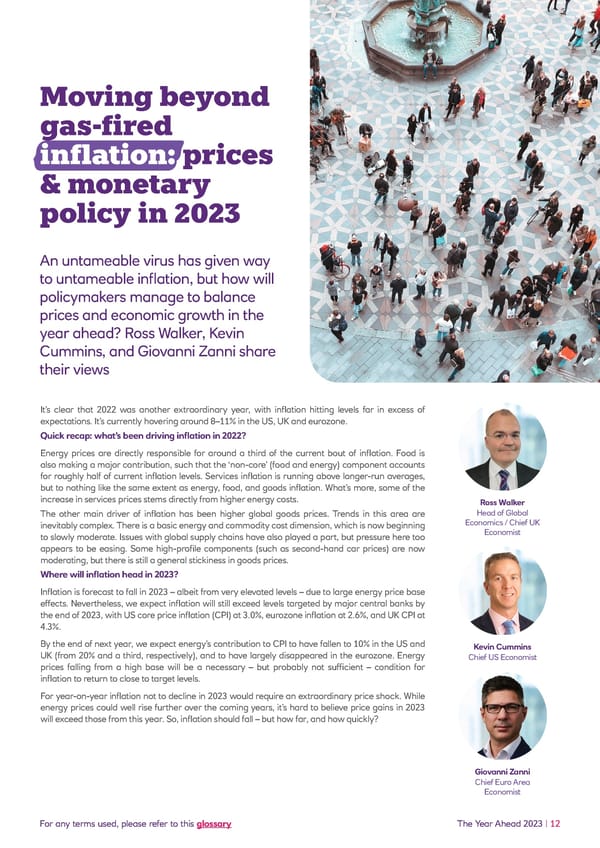Moving beyond gas-fired inflation: prices & monetary policy in 2023 An untameable virus has given way to untameable inflation, but how will policymakers manage to balance prices and economic growth in the year ahead? Ross Walker, Kevin Cummins, and Giovanni Zanni share their views It’s clear that 2022 was another extraordinary year, with inflation hitting levels far in excess of expectations. It’s currently hovering around 8–11% in the US, UK and eurozone. Quick recap: what’s been driving inflation in 2022? Energy prices are directly responsible for around a third of the current bout of inflation. Food is also making a major contribution, such that the ‘non-core’ (food and energy) component accounts for roughly half of current inflation levels. Services inflation is running above longer-run averages, but to nothing like the same extent as energy, food, and goods inflation. What’s more, some of the increase in services prices stems directly from higher energy costs. Ross Walker The other main driver of inflation has been higher global goods prices. Trends in this area are Head of Global inevitably complex. There is a basic energy and commodity cost dimension, which is now beginning Economics / Chief UK to slowly moderate. Issues with global supply chains have also played a part, but pressure here too Economist appears to be easing. Some high-profile components (such as second-hand car prices) are now moderating, but there is still a general stickiness in goods prices. Where will inflation head in 2023? Inflation is forecast to fall in 2023 – albeit from very elevated levels – due to large energy price base effects. Nevertheless, we expect inflation will still exceed levels targeted by major central banks by the end of 2023, with US core price inflation (CPI) at 3.0%, eurozone inflation at 2.6%, and UK CPI at 4.3%. By the end of next year, we expect energy’s contribution to CPI to have fallen to 10% in the US and Kevin Cummins UK (from 20% and a third, respectively), and to have largely disappeared in the eurozone. Energy Chief US Economist prices falling from a high base will be a necessary – but probably not sufficient – condition for inflation to return to close to target levels. For year-on-year inflation not to decline in 2023 would require an extraordinary price shock. While energy prices could well rise further over the coming years, it’s hard to believe price gains in 2023 will exceed those from this year. So, inflation should fall – but how far, and how quickly? Giovanni Zanni Chief Euro Area Economist For any terms used, please refer to this glossary The Year Ahead 2023 | 12
 NatWest Year Ahead 2023 Page 11 Page 13
NatWest Year Ahead 2023 Page 11 Page 13